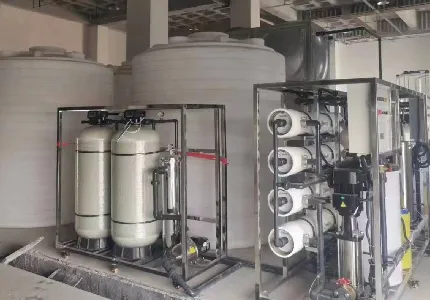loading...
- No. 9, Xingyuan South Street, Dongwaihuan Road, Zaoqiang County, Hengshui, Hebei, China
- admin@zjcomposites.com
- +86 15097380338
- Welcome to visit our website!
Advancements in Glass Fiber Reinforced Polymer Bars for Enhanced Structural Applications
Glass Fiber Reinforced Polymer Bars Revolutionizing Construction Materials
In the realm of construction and civil engineering, the need for durable, lightweight, and corrosion-resistant materials is more critical than ever. Traditional materials such as steel and concrete have long been the backbone of construction projects. However, with the advancements in materials science, Glass Fiber Reinforced Polymer (GFRP) bars are emerging as a transformative option, proving to be a game-changer in various applications.
GFRP bars are created by combining glass fibers with a polymer matrix, usually epoxy or vinyl ester. This composite structure provides exceptional strength-to-weight ratios, making GFRP bars lighter than conventional steel reinforcement. The reduced weight not only simplifies transportation and handling but also minimizes the overall structural weight, thereby making a significant difference in design and application.
Glass Fiber Reinforced Polymer Bars Revolutionizing Construction Materials
The application of GFRP bars in construction also aligns with sustainability goals. The production of GFRP materials often consumes less energy compared to traditional steel production, contributing to a lower carbon footprint. Moreover, the longevity of GFRP bars means that they can reduce the frequency of replacements and the associated environmental impact of manufacturing and disposal. These factors make GFRP a more eco-friendly option in the construction industry.
glass fiber reinforced polymer bars

GFRP bars are also non-magnetic and non-conductive, making them ideal for use in applications where electromagnetic interference must be avoided, such as in certain medical facilities, laboratories, and data centers. Additionally, their lightweight and strong properties permit innovative designs, enabling architects and engineers to push the boundaries of modern architecture.
In terms of performance, GFRP bars exhibit excellent tensile strength, matching or exceeding that of traditional steel when appropriately designed and manufactured. This strength allows for the creation of thinner and lighter elements in concrete structures, which can result in significant reductions in material usage and cost. Furthermore, GFRP bars have a high elasticity modulus, which provides a good balance between flexibility and stiffness, ensuring structural integrity under various load conditions.
Despite the numerous advantages of GFRP bars, there are some considerations to keep in mind. The initial cost of GFRP materials is typically higher than that of traditional steel reinforcement. However, when one factors in the long-term savings from reduced maintenance and longer service life, GFRP offers a compelling economic argument. Furthermore, as production processes become more refined and demand for GFRP increases, the costs are expected to decrease, making this technology more accessible.
The implementation of GFRP bars has seen promising success in various projects worldwide. For instance, recent bridge constructions have utilized GFRP bars to enhance their longevity and performance. Research continues to delve into optimizing manufacturing processes and exploring further applications across different fields, including pre-cast concrete products and retrofitting existing structures.
In conclusion, Glass Fiber Reinforced Polymer bars are revolutionizing the materials landscape in construction. Their advantages—lightweight, corrosion resistance, sustainability, and design flexibility—position them as a superior alternative to traditional reinforcement materials. As the construction industry continues to embrace innovation, GFRP bars are set to play a crucial role in shaping the future of modern infrastructure. With ongoing research and development, the potential applications for GFRP are limitless, promising an exciting advancement in how we build for tomorrow.
-
The Rise of FRP Profiles: Strong, Lightweight, and Built to LastNewsJul.14,2025
-
SMC Panel Tanks: A Modern Water Storage Solution for All EnvironmentsNewsJul.14,2025
-
GRP Grating: A Modern Solution for Safe and Durable Access SystemsNewsJul.14,2025
-
Galvanized Steel Water Tanks: Durable, Reliable, and Ready for UseNewsJul.14,2025
-
FRP Mini Mesh Grating: The Safer, Smarter Flooring SolutionNewsJul.14,2025
-
Exploring FRP Vessels: Durable Solutions for Modern Fluid HandlingNewsJul.14,2025
-
GRP Structures: The Future of Lightweight, High-Performance EngineeringNewsJun.20,2025
